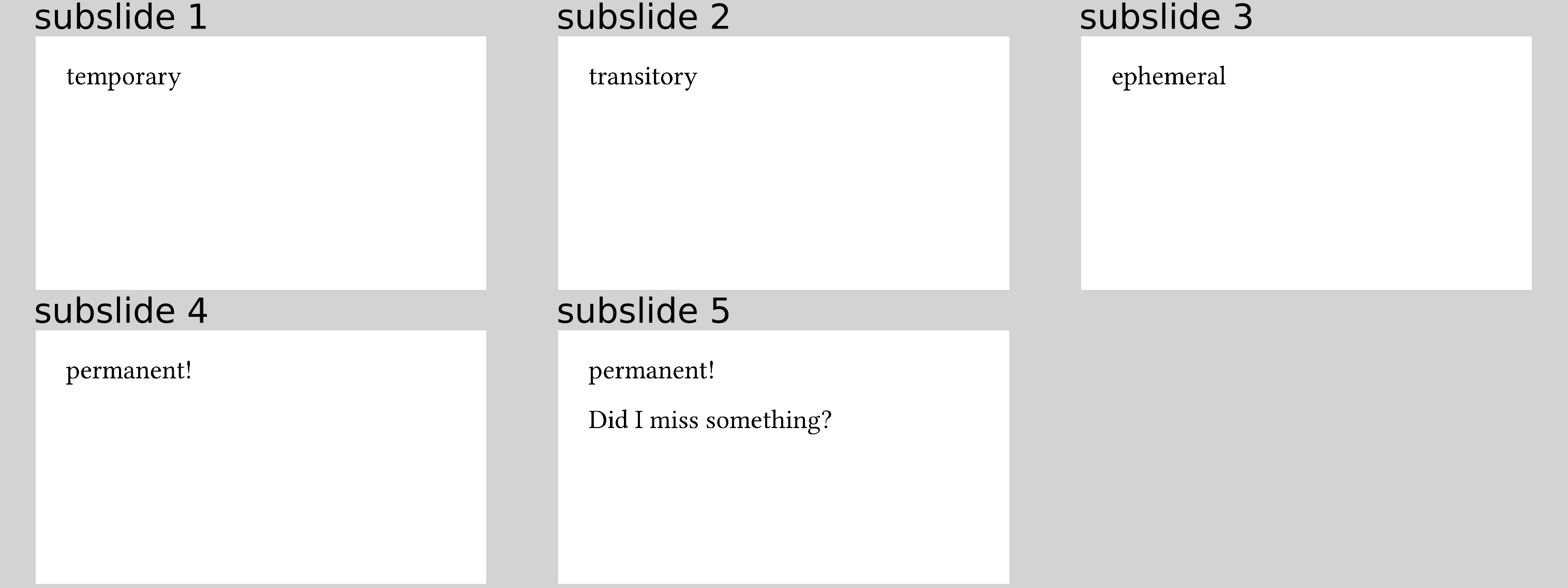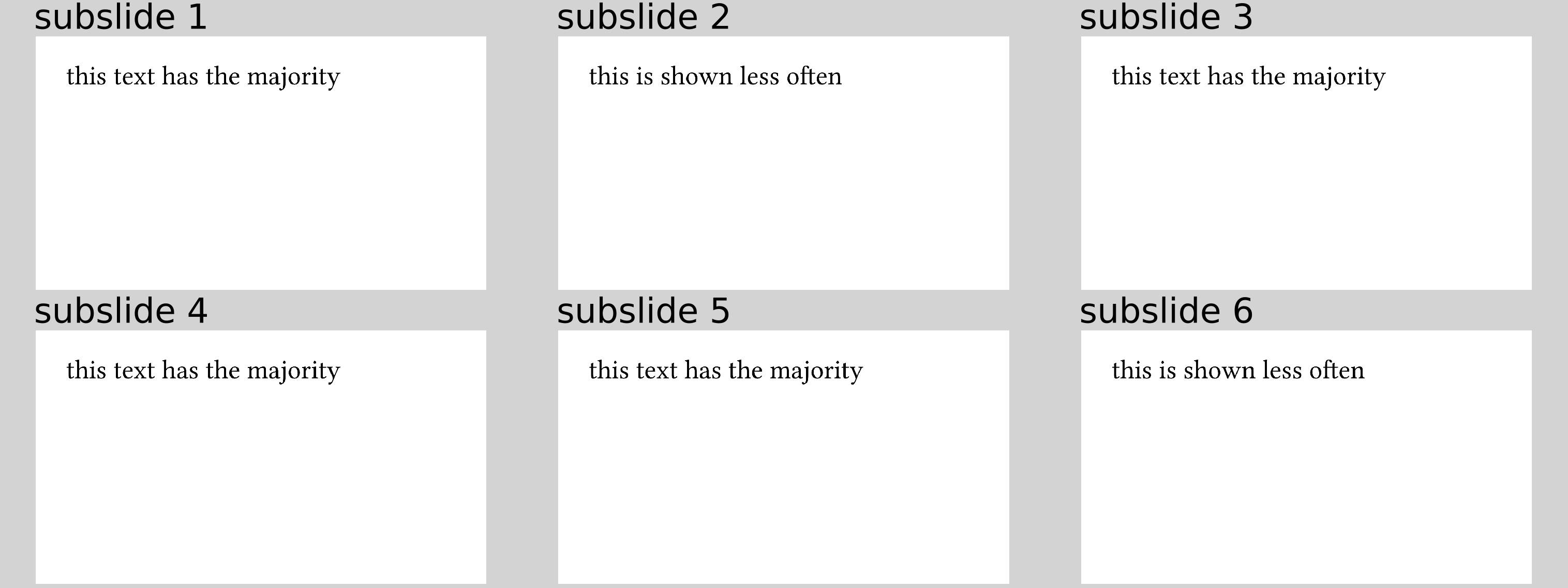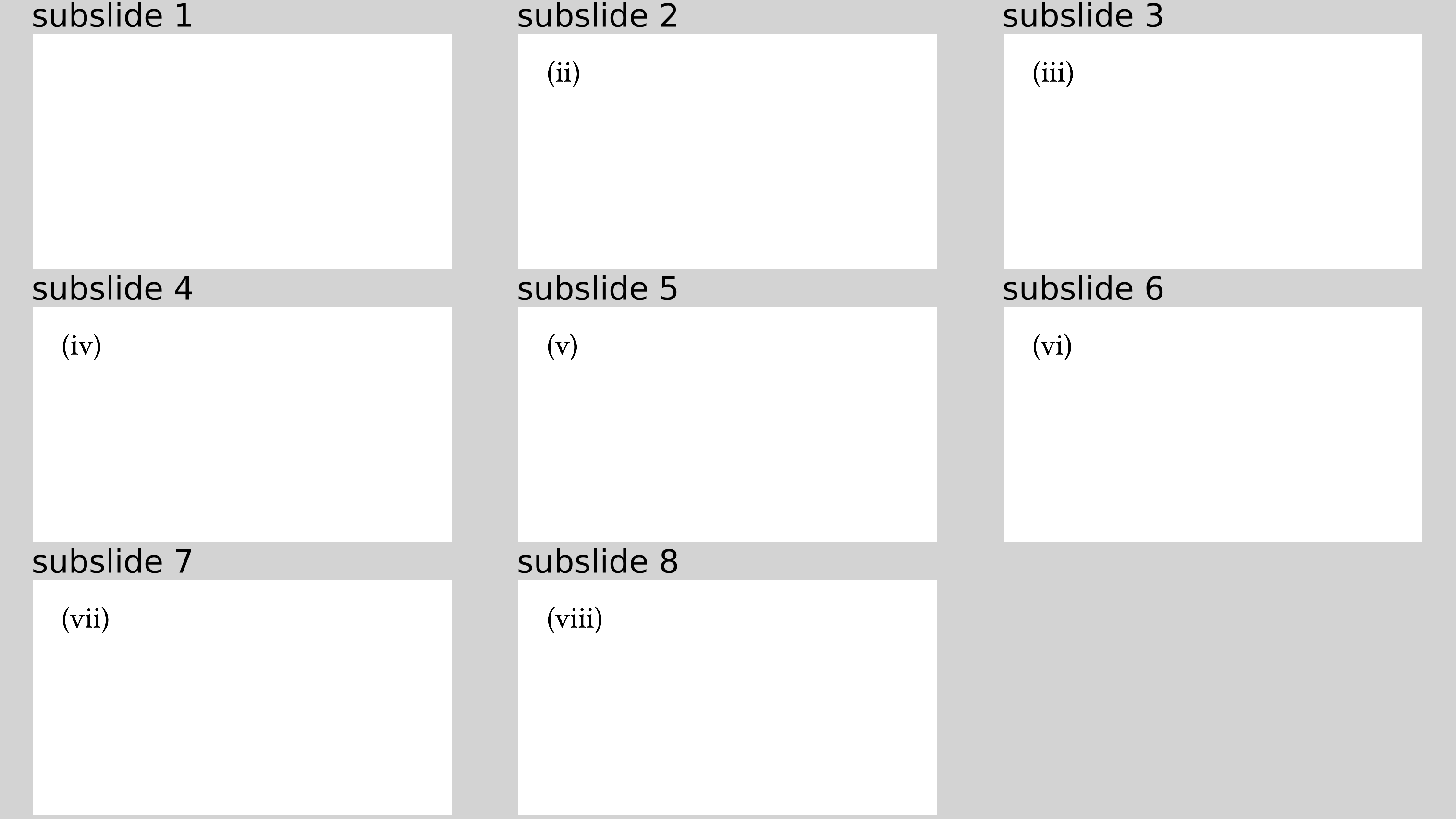#alternatives to substitute content
The so far discussed helpers #later, #one-by-one etc. all build upon
#uncover.
There is an analogon to #one-by-one that is based on #only, namely
#alternatives.
You can use it to show some content on one subslide, then substitute it by
something else, then by something else, etc.
Consider this example:
#only(1)[Ann] #only(2)[Bob] #only(3)[Christopher]
likes
#only(1)[chocolate] #only(2)[strawberry] #only(3)[vanilla]
ice cream.
#repeat[| #h(4cm)] // visual reference
Here, we want to display three different sentences with the same structure: Some person likes some sort of ice cream.

As you can see, the positioning of likes and ice cream moves
around in the produced slide because, for example, Ann takes much less space
than Christopher when using #only for that job.
This somewhat disturbs the perception of the constant structure of the sentence
and that only the names and kinds of ice cream change.
To avoid such movement and only substitute certain parts of content, you can use
the #alternatives function.
With it, our example becomes:
#alternatives[Ann][Bob][Christopher]
likes
#alternatives[chocolate][strawberry][vanilla]
ice cream.
#repeat[| #h(4cm)] // visual reference
resulting in

#alternatives will put enough empty space around, for example, Ann such that
it uses the same amount of space as Christopher.
In a sense, it is like a mix of #only and #uncover with some reserving of
space.
Repeat last content
In case you have other dynamic content on a slide that happens after the contents
of #alternatives are exhausted, you might want to not have the #alternatives
element disappear but instead continue to show its last content argument.
To achieve this, you can use the repeat-last parameter:
#alternatives(repeat-last: true)[temporary][transitory][ephemeral][permanent!]
#uncover(5)[Did I miss something?]
resulting in

Positioning
By default, all elements that enter an #alternatives command are aligned at
the bottom left corner.
This might not always be the desired or the most pleasant way to position it, so
you can provide an optional position argument to #alternatives that takes an
alignment or 2d alignment.
For example:
We know that
#alternatives(position: center + horizon)[$pi$][$sqrt(2)^2 + 1/3$]
is
#alternatives[irrational][rational].
makes the mathematical terms look better positioned:

All functions described on this page have such a position argument.
Similar to #one-by-one, #alternatives also has an optional start argument
that works just the same.
#alternatives-match
#alternatives has a couple of "cousins" that might be more convenient in some
situations.
The first one is #alternatives-match that has a name inspired by match-statements
in many functional programming languages.
The idea is that you give it a dictionary mapping from subslides to content:
#alternatives-match((
"1, 3-5": [this text has the majority],
"2, 6": [this is shown less often]
))
resulting in

Note that it is your responsibility to make sure that the subslide sets are mutually disjoint.
#alternatives-cases
You can use this function if you want to have one piece of content that changes only slightly depending of what "case" of subslides you are in. So instead of
#alternatives-match((
"1, 3" : [
Some text
],
"2" : [
#set text(fill: teal)
Some text
],
))
you can avoid duplication and write
#alternatives-cases(("1, 3", "2"), case => [
#set text(fill: teal) if case == 1
Some text
])
using a function that maps the current "case" to content, resulting in

Note that the cases are 0-indexed (as are Typst arrays).
#alternatives-fn
Finally, you can have very fine-grained control over the content depending on
the current subslide by using #alternatives-fn.
It accepts a function (hence the name) that maps the current subslide index to
some content.
Similar to #alternatives, it accepts an optional start parameter that has a
default of 1.
#alternatives-fn only knows for how long to display something, though, if you
provide either the number of subslides (count parameter) or the last subslide
index (end parameter).
So exactly one of them is necessary.
For example:
We are on subslide:
#alternatives-fn(start: 2, count: 7, subslide => {
numbering("(i)", subslide)
})
resulting in
